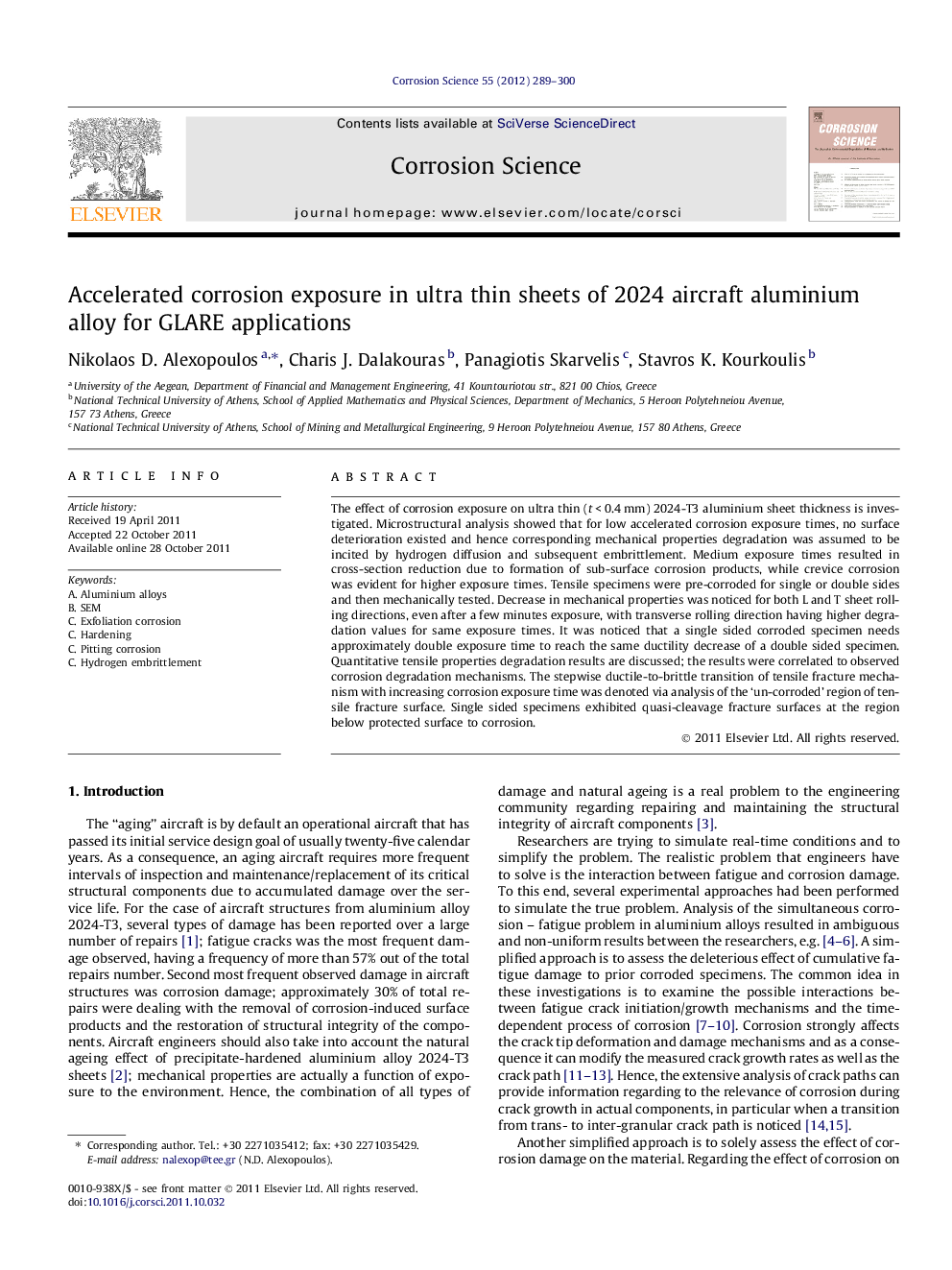| Article ID | Journal | Published Year | Pages | File Type |
|---|---|---|---|---|
| 1469929 | Corrosion Science | 2012 | 12 Pages |
The effect of corrosion exposure on ultra thin (t < 0.4 mm) 2024-T3 aluminium sheet thickness is investigated. Microstructural analysis showed that for low accelerated corrosion exposure times, no surface deterioration existed and hence corresponding mechanical properties degradation was assumed to be incited by hydrogen diffusion and subsequent embrittlement. Medium exposure times resulted in cross-section reduction due to formation of sub-surface corrosion products, while crevice corrosion was evident for higher exposure times. Tensile specimens were pre-corroded for single or double sides and then mechanically tested. Decrease in mechanical properties was noticed for both L and T sheet rolling directions, even after a few minutes exposure, with transverse rolling direction having higher degradation values for same exposure times. It was noticed that a single sided corroded specimen needs approximately double exposure time to reach the same ductility decrease of a double sided specimen. Quantitative tensile properties degradation results are discussed; the results were correlated to observed corrosion degradation mechanisms. The stepwise ductile-to-brittle transition of tensile fracture mechanism with increasing corrosion exposure time was denoted via analysis of the ‘un-corroded’ region of tensile fracture surface. Single sided specimens exhibited quasi-cleavage fracture surfaces at the region below protected surface to corrosion.
► Accelerated exfoliation corrosion tests on ultra thin 2024 alloy used for GLARE applications. ► Experimental tensile properties on pre-corroded specimens for both rolling directions. ► Assessment of the corrosion-induced pit growth mechanism. ► Degradation mechanisms and tensile properties as a function of corrosion exposure. ► Step-wise change from ductile to brittle fracture mechanism with increasing corrosion exposure.
